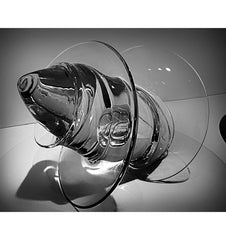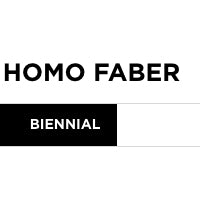
Born in Chioggia (Venice, Italy) in 1900, he died in Venice in 1984.
In 1929 Flavio Poli collaborated with the I.V.A.M. - of which he was a partner Libero Vitali - and designed figures, to be made of solid glass. Poli was the first to tackle, in Murano, the theme of the female nude: in the compostiera (glass, ceramic or sim. Cup, used to serve fruit compotes at the table) of 1929-30, he designed a central female bust, with gripping function.
For the Compagnia di Venezia and Murano he designed massello animals and for the artistic glassworks Mario and Lino Nason he created figures, in collaboration with the engraver Gino Francesconi. He also collaborated with the ancient glass factory Pauly & C.
His designs were made in glass by professional glassmakers, including Francesco Martinuzzi and Italo Nason, who created the series of Pudore sculptures, in pure twentieth century style, each drawing them from a single mass of transparent, white or amber glass. One of these female nudes belonged to the Duilio Cambellotti collection and was exhibited at the 1930 Monza Biennale and the 1931 Amsterdam Decorative Arts Exhibition. The collection of Applied Arts at the Castello Sforzesco in Milan has two sculptures from this series.
In 1934 Flavio Poli took over the artistic direction of Seguso Vetri D’Arte and in 1937 he also became a partner. During this period he designed massive thick vases, sculptures and lamps.
After the war Flavio Poli began the production of sommerso vases, with dazzling and contrasting colors. He was awarded the Compasso d'oro award in 1954. In 1963 he left Seguso Vetri d'Arte and from 1964 to 1966 he worked in the Società Veneziana di Conterie e Cristallerie, where he inaugurated a sector of artistic blown glass.
His works from this period, made of submerged glass, with the overlap of several glass layers, of different consistency and colors, were presented at the Venice Biennials, at the Milan Triennials and at the Universal Exposition of Brussels in 1958. Works conceived by Flavio Poli they are exhibited at the Murano Glass Museum.







Wayne Thavaraj
Dec 10, 2023 at 18:45I believe I have two figures from the female nude collection. I would love to know more about them. I could send pictures if you’d like. Please let me know.
Sincerely,
Wayne Thavaraj